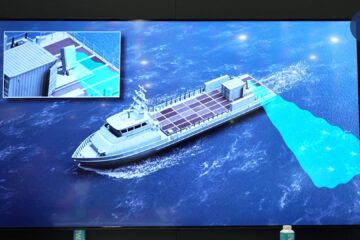An analyst said the joint drills showed a strong alliance between Manila and the US necessary to improve operational integration between allies.
The Maritime Cooperative Activity until January 4 that is currently taking place in the West Philippine Sea, Manila’s name for South China Sea waters within its 200 nautical miles exclusive economic zone, was designed to support our longstanding partnership and to further advance combined capabilities in the maritime domain.
Washington deployed its U.S. Navy’s Carrier Strike Group (CSG) 1 led by its flagship Nimitz-class aircraft carrier USS Carl Vinson (CVN 70), Ticonderoga-class guided-missile cruiser USS Princeton (CG 59), Arleigh Burke-class guided-missile destroyers USS Kidd (DDG 100) and USS Sterett (DDG 104) while the Philippines sent Gregorio del Pilar-class offshore patrol vessels BRP Gregorio del Pilar (PS-15), BRP Ramon Alcaraz (PS-16), and Tarlac-class landing platform dock BRP Davao del Sur (LD-602) for the activity.
General Romeo Brawner, Jr., Armed Forces of the Philippines Chief, said the participating Navies will conduct passing exercises, communication checks, cross-deck exercises, joint patrols, Officer of the Watch maneuvers, and fixed-wing flight operations.
The military official said on January 3 both navies performed advanced maritime communication exercises and completed division tactics, an exercise to develop their confidence in maneuvering near other vessels.
“The 2nd maritime cooperative activity marks a significant leap in our alliance and interoperability with the United States. It also demonstrates our progress in defense capabilities and development as a world-class armed force, as we carry out our mandate to protect the people and the state,”
“Our alliance is stronger than ever, sending a message to the world. We are advancing a rules-based international order and a free and open Indo-Pacific region in the face of regional challenges,”
General Romeo Brawner, Jr., Armed Forces of the Philippines Chief
The exercises, part of the 1951 Mutual Defense Treaty signed between the U.S. and the Philippines that calls on both countries to aid each other in times of aggression by an external power, comes amid heightened tensions between the Philippines and China over the waterway.
Last month, the central government accused China of harassment and ramming while the Philippine Coast Guard conducted a resupply mission to a military outpost at Second Thomas Shoal.
Brawner himself was on a civilian chartered vessel that delivers supplies to navy personnel at the BRP Sierra Madre, a rusted World War II-era navy ship that Manila grounded deliberately to mark its territorial claim at Ayungin Shoal, a reef in the contested Spratly Islands that lies within the Philippines’ exclusive economic zone.
At the same time, the government accused the Chinese coast guard of firing water cannon and painful sound blasts against boats that were ferrying supplies to Filipino fishermen near Scarborough Shoal, another disputed area, over the weekend.
Four Chinese vessels shadowed a civilian “Christmas convoy” that planned to deliver holiday cheer and supplies to troops and fishermen in disputed parts of the sea, forcing them to turn back.
Rear Adm. Carlos Sardiello, CSG-1 commander, said the U.S. Navy regularly conducts exercises like these to strengthen ties and enhance combined readiness and capabilities in support of a free and open Indo-Pacific.
“Our strike group welcomes the opportunity to conduct maritime activities,” Sardiello said in a statement.
Sardiello oversees the CSG-1, a multiplatform team of ships and aircraft, capable of carrying out a wide variety of missions around the globe such as combat missions, humanitarian assistance and disaster relief response.
“Sailing and operating together demonstrates our commitment to improving our interoperability and information sharing with the Armed Forces of the Philippines, to enhance our ability to coordinate maritime domain awareness and other shared security interests,”
Rear Adm. Carlos Sardiello, CSG-1 commander
Maritime security expert Ray Powell, a retired US Air Force officer, described the joint activity as another milestone in the continued reinvigoration of the U.S.-Philippine alliance under the President Ferdinand Administration.
“These exercises send the message that the Philippines is not alone in the West Philippine Sea, but must be considered by potential adversaries as part of a network of military allies and partners. This increases Manila’s leverage on the international stage,” Powell said.
China has competing claims in the South China Sea with the Philippines, Malaysia, Brunei and Vietnam.
In 2016, a U.N. arbitration court ruled in favor of the Philippines, saying that China’s historical claims to the sea region as delineated then in Chinese maps by a nine-dash line (now a 10-dash line) were invalid. But Beijing rejected the ruling and has since insisted that it has jurisdiction over all areas within that boundary.
Back in 2012, Manila took Beijing to court after alleging that Chinese naval vessels obstructed the Philippines’ entry to Scarborough Shoal, which has since remained under China’s administrative control.






